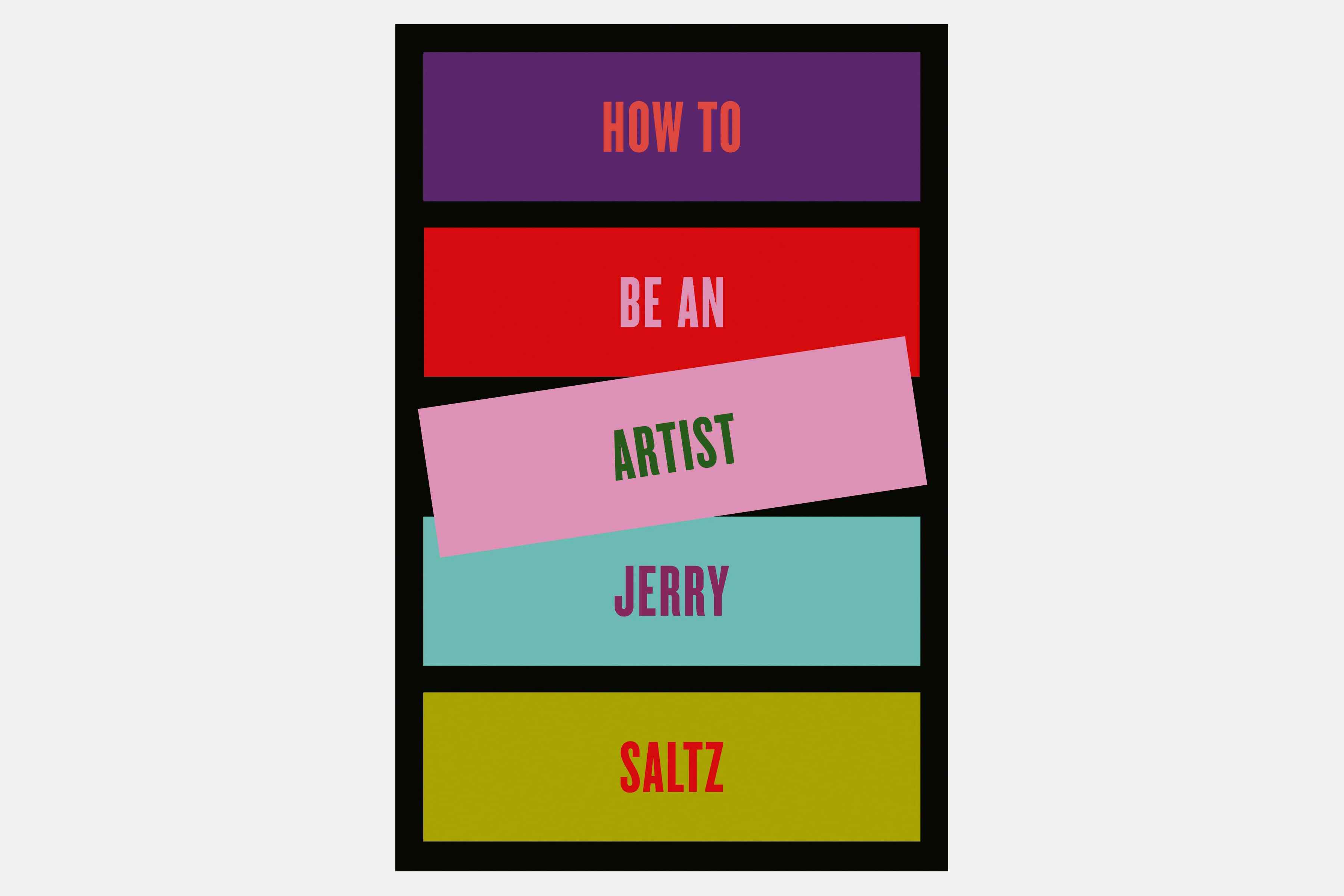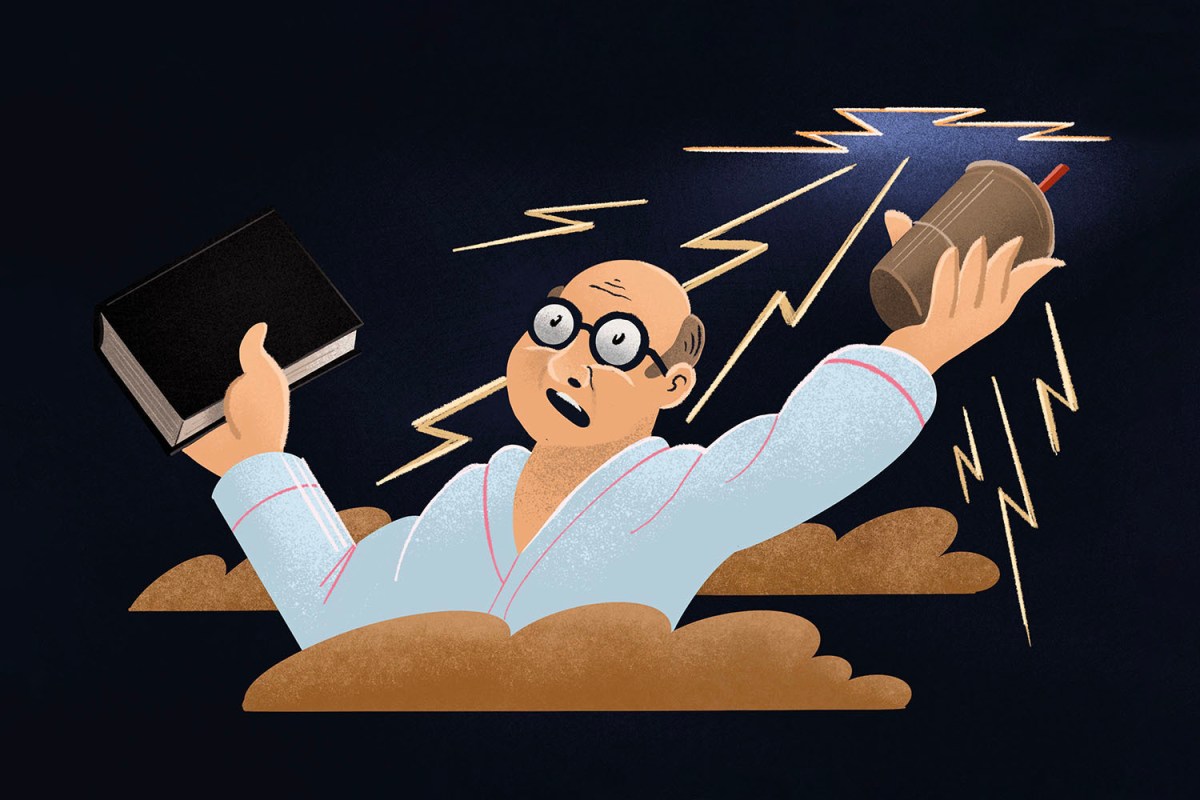Jerry Saltz has been put in an odd position. One of the most well-known art critics in America, Saltz finds himself playing the part of a self-help guru for creative types trying to squeeze any bit of inspiration they can out of these stressful times.
His new book, How to Be an Artist, was an instant success when it came out in March, making its way onto the New York Times bestseller list. A collection of page-long bits of advice on exactly what the book’s title advertises, Saltz doles out wisdom on everything from embracing genres to actually breaking into the quote-unquote art world. It’s a small book, clocking in at 125 pages, and the chapters are a few sentences long, bite-sized nuggets of wisdom, the sort of thing that usually makes me wince. I don’t care for “How To” books, but the fact that I’ve always enjoyed reading Saltz and got my copy of the book just under the wire before everything shut down meant I had a little more time with this one. And just like nearly everybody else, I was looking for inspiration.
When I reached Saltz by phone, he and his wife, the critic Roberta Smith, were hunkered down in their home upstate, two hours from New York City. I was curious how this person who is so immersed in art all the time, somebody who just wrote a book about how to create like there’s no tomorrow, is handling this.
“The withdrawal symptoms have been severe for both of us,” he says. “I see 20 to 30 shows a week, which means galleries, museums, alternative spaces, anything. And then I go home and fight the demons and then I try to write about it and that is my entire life. I don’t have any other life and I love my life.”
Obviously we aren’t all Jerry Saltz. Some of us are lucky if we’re able to steal away a few hours once a month to go to a gallery or walk aimlessly around a museum. But there is still something to be taken from this: we are all lacking for sources of inspiration these days. For Saltz, that opportunity to interact with art, to look at sculptures or paintings up close, has been taken away from him. The thing he writes about is no longer available.
So Saltz took some of his own advice. Looking to the 47th tip in his book, “Learn to Write About Your Own Work,” he went to his New York magazine bosses and told them, “I’d actually like to use whatever this time is to probe for something deeper in my own work or rather maybe probe for something deeper that I’ve been thinking about with art,” he says. “My whole life, things that are just beneath the surface of art that I’ve loved or been vexed by or whatever.”

For Saltz, who calls himself “pathologically bashful” and claims he hasn’t been to a sit-down art-world dinner in decades, he’s trying to do everything he can to squeeze work out of this downtime. “I was built to do exactly this life. To just wake up and work all day,” he says. “Now I don’t see the art in the flesh anymore, and I’ve spent a lifetime telling people, ‘You must see art in the flesh,’ and now I too can’t do it. I instead am looking into myself to see all the art I ever saw again, and anew.”
His point isn’t whether you can sell your work or not, if it’s “bad” or “good”; it’s that you’re doing something. Of course, it might not be that easy to get to work, given the circumstances. Chapter 17 of How to Be an Artist, “Use Your Studio,” prompts the reader to “Breathe, pace, do whatever it takes to prepare yourself … The decor of your studio will bleed into your imagination.” But what if your studio is the desk in your living room, your bed or your couch because there’s nowhere else to go during COVID-19 lockdown?
“Well, we don’t know the secrets that your couch has and you are here to find out,” he says. “Your kitchen table is as big as the world. Kant never saw the sea. Henry Darger never left the three blocks of his apartment. Emily Dickinson never left Amherst, Massachusetts. All of them imagined vast, vast universes from their apartments, their kitchen tables a room of their own. Even if it’s a table that you clear after the children have gone to sleep. Bruce Springsteen recently said, ‘All of that stuff and all of my songs, none of it happened. All of it I made up.’ And then he pauses and says, ‘That’s how good I am.’”
But what about if the imagination isn’t kicking? Saltz has an old-fashioned solution for that: coffee, his consumption of which has become legendary thanks to Instagram posts showing the multiple cups he buys to get ready for a day of work.
Saltz says he’s aware some of his posts have gone “insanely viral,” but points out he was never really able to take drugs and that he has a hard time holding his liquor, so he had another idea: “I asked my doctor, would it be okay if I addicted myself to caffeine in the form of coffee? And he said, ‘Sure.’ And I thought, well god damnit, if everybody else gets to have wine at night and cocaine and they’re smoking weed, I can drink coffee as late as like six o’clock at night say, or a little later and I can fall asleep. So I have fun. And everybody’s coffee ritual is a ritual.”
And ritual, as any creative type knows, is vital.
“It turns out part of my idiot ritual is going to the deli and buying the coffee. That’s the real difference. I would say to people, ‘Come on — deli coffee is really, really good.’”
This article appeared in an InsideHook newsletter. Sign up for free to get more on travel, wellness, style, drinking, and culture.

























